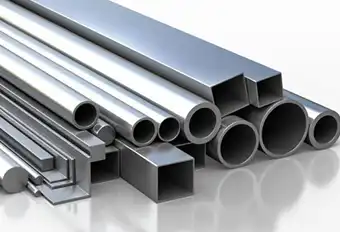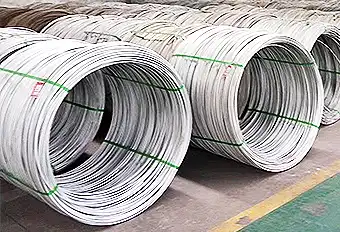Designing to Codes and Standards
Regardless of the material to be used, most design projects are exercises in creative problem solving. If the project is a very advanced one, pushing the boundaries of available technical knowledge, there are few guidelines available for the designer. In such instances, basic science, intuition, and discussions with peers are common approaches that combine to produce an approach to solving the problem. With the application of skill, daring, a little bit of luck, money, and patience, a workable solution usually emerges.
However, most design projects just are not that challenging or different from what has been done in the past. Historically, such information was carefully guarded and was often kept secret. With the passage of time, however, these privately developed methods of solving design problems became common knowledge, ever more firmly established. Eventually they evolved into published standards of practice. Some government entities, acting under their general duty to preserve general welfare and to protect life and property from harm, added the standards to their legal bases.
The need for codes and standards
The fundamental need for codes and standards in design is based on two concepts, interchangeability and compatibility. When manufactured articles were made by artisans working individually, each item was unique and the craftsman made the parts to fit each other. When a replacement part was required, it had to be made specially to fit.
However, as the economy grew and large numbers of an item were required, the handcrafted method was grossly inefficient. Economies of scale dictated that parts should be as nearly identical as possible, and that a usable replacement part would be available in case it was needed. The key consideration was that the replacement part had to be interchangeable with the original one.
Standardization of parts within a particular manufacturing company to ensure interchangeability is only one part of the industrial production problem. The other part is compatibility. What happens when parts from one company, working to their standards, have to be combined with parts from another company, working to their standards? Will parts from company A fit with parts from company B? Yes, but only if the parts are compatible. In other words, the standards of the two companies must be the same.
Purposes and objectives of codes and standards
The protection of general welfare is one of the common reasons for the establishment of a government agency. The purpose of codes is to assist that government agency in meeting its obligation to protect the general welfare of the population it serves. The objectives of codes are to prevent damage to property and injury to or loss of life by persons. These objectives are accomplished by applying accumulated knowledge to the avoidance, reduction, or elimination of definable hazards.
Before going any further, the reader needs to understand the differences between "codes" and "standards". Which items are codes and which are standards? One of the several dictionary definitions for "code" is "any set of standards set forth and enforced by a local government for the protection of public safety, health, etc., as in the structural safety of buildings (building code), health requirements for plumbing, ventilation, etc. (sanitary or health code), and the specifications for fire escapes or exits (fire code)". "Standard" is defined as "something considered by an authority or by general consent as a basis of comparison; an approved model".
As a practical matter, codes tell the user what to do and when and under what circumstances to do it. Codes are often legal requirements that are adopted by local jurisdictions that then enforce their provisions. Standards tell the user how to do it and are usually regarded only as recommendations that do not have the force of law.
As noted in the definition for code, standards are frequently collected as reference information when codes are being prepared. It is common for sections of a local code to refer to nationally recognized standards. In many instances, entire sections of the standards are adopted into the code by reference, and then become legally enforceable.
How standards develop
Whenever a new field of economic activity emerges, inventors and entrepreneurs scramble to get into the market, using a wide variety of approaches. After a while the chaos decreases, and a consensus begins to form as to what constitutes "good practice" for that economic activity.
As an industry matures, more and more companies get involved as suppliers, subcontractors, assemblers, and so forth. Establishing national trade practices is the next step in the standards development process. This is usually done through special institutions like the American National Standards Institute (ANSI), which provides the necessary forum. A sponsoring trade association will request that ANSI review its standard. A review group is then formed that includes members of many groups other than the industry, itself. This expands the area of consensus and is an essential feature of the ANSI process.
ANSI circulates copies of the proposed standard to all interested parties, seeking comments. A time frame is set up for receipt of comments, after which a Board of Standards Review considers the comments and makes what it considers necessary changes. After more reviews, the standard is finally issued and published by ANSI, listed in their catalog, and available to anyone who wishes to purchase a copy.
A similar process is used by the International Standards Organization (ISO), which began to prepare an extensive set of worldwide standards in 1996.
One of the key features of the ANSI system is the unrestricted availability of its standards. Company, trade, or other proprietary standards may not be available to anyone outside that company or trade, but ANSI standards are available to everyone. With the wide consensus format and easy accessibility, there is no reason for designers to avoid the step of searching for and collecting any and all standards applicable to their particular projects.
Types of codes
There are two broad types of codes: performance codes and specification or prescriptive codes. Performance codes state their regulations in the form of what the specific requirement is supposed to achieve, not what method is to be used to achieve it. The emphasis is on the result, not on how the result is obtained. Specification or prescriptive codes state their requirements in terms of specific details and leave no discretion to the designer. There are many of each type in use.
Trade codes relate to several public welfare concerns. For example, the plumbing, ventilation, and sanitation codes relate to health. The electrical codes relate to property damage and personal injury. Building codes treat structural requirements that ensure adequate resistance to applied loads. Mechanical codes are involved with both proper component strength and avoidance of personal injury hazards. All of these codes, and several others, provide detailed guidance to designers of buildings and equipment that will be constructed, installed, operated, or maintained by persons skilled in those particular trades.
Safety codes, on the other hand, treat only the safety aspects of a particular entity. The safety codes sets forth detailed requirements for safety as it relates to buildings.
Professional society codes have been developed, and several have wide acceptance. The American Society of Mechanical Engineers (ASME) publishes the Boiler and Pressure Vessel Code, which have been used as a design standard for many decades. The Institute of Electrical and Electronic Engineers (IEEE) publishes a series of books that codify recommended good practices in various areas of their discipline. The Society of Automotive Engineers (SAE) publishes hundreds of standards relating to the design and safety requirements for vehicles and their appurtenances. The American Society for Testing and Materials (ASTM) publishes thousands of standards relating to materials and the methods of testing to ensure compliance with the requirements of the standards.
Statutory codes are those prepared and adopted by some governmental agency, local, stale, or federal. They have the force of law and contain enforcement provisions, complete with license requirements and penalties for violations. There are literally thousands of these, each applicable within its geographical area of jurisdiction.
Regulations. Laws passed by legislatures are written in general and often vague language. To implement the collective wisdom of the lawmakers, the agency staff then comes in to write the regulations that spell out the details.
Types of standards
Proprietary (in-house) standards are prepared by individual companies for their own use. They usually establish tolerances for various physical factors such as dimensions, fits, forms, and finishes for in-house production. When outsourcing is used, the purchasing department will usually use the in-house standards in the terms and conditions of the order.
Quality assurance provisions are often in-house standards, but currently many are being based on the requirements of ISO 9000. Operating procedures for material review boards are commonly based on in-house standards. It is assumed that designers, as a function of their jobs, are intimately familiar with their own employer’s standards.
Government specification standards for federal, state, and local entities involve literally thousands of documents. Because government purchases involve such a huge portion of the national economy, it is important that designers become familiar with standards applicable to this enormous market segment. To make certain that the purchasing agency gets precisely the product it wants, the specifications are drawn up in elaborate detail. Failure to comply with the specifications is cause for rejection of the seller's offer, and there are often stringent inspection, certification, and documentation requirements included.
It is important for designers to note that government specifications, particularly Federal specifications, contain a section that sets forth other documents that are incorporated by reference into the body of the primary document. These other documents are usually federal specifications, federal and military standards, and applicable industrial or commercial standards. The MIL standards and Handbooks for a particular product line should be a basic pan of the library of any designers working in the government supply area.
Product definition standards are published by the National Institute of Standards and Technology under procedures of the Department of Commerce. It establishes the grading rules, names of specific varieties of soft wood, and sets the uniform lumber sizes for this very commonly used material.
Commercial standards (denoted by the letters CS) are published by the Commerce Department for articles considered to be commodities. Commingling of such items is commonplace, and products of several suppliers may be mixed together by vendors. The result can be substantial variations in quality. To provide a uniform basis for fair competition, the Commercial Standards set forth test methods, ratings, certifications, and labeling requirements. Testing and certification standards are developed for use by designers, quality assurance agencies, industries, and testing laboratories.
International standards have been proliferating rapidly for the past two decades. This has been in response to the demands of an increasingly global economy for uniformity, compatibility, and inter-changeability demands for which standards are ideally suited.
Beginning in 1987, the International Standards Organization (ISO) attacked one of the most serious international standardization problems, that of quality assurance and control. These efforts resulted in the publication of the ISO 9000 Standard for Quality Management. This has been followed by ISO 14000 for Environmental Management Standards, which is directed at international environmental problems.
The ISO has several Technical Committees (TC) that publish handbooks and standards in their particular fields. Examples are the ISO Standards Handbooks on Mechanical Vibration and Shock, Statistical Methods for Quality Control, and Acoustics. All of these provide valuable information for designers of products intended for the international market.
Codes and standards preparation organizations
U.S. Government Documents. For Federal government procurement items, other than for the Department of Defense, the Office of Federal Supply Services of the General Services Administration issues the Index of Federal Specifications, Standards and Commercial Item Descriptions every April.
The American National Standards Institute also publishes a catalog of all their publications and distributes catalogs of standards published by 38 other ISO member organizations. They also distribute ASTM and ISO standards and English language editions of Japanese Standards, Handbooks, and Materials Data Books. ANSI does not handle publications of the British Standards Institute or the standards organizations in Germany and France.
As mentioned previously, there are many organizations that act as sponsors for the standards that ANSI prepares under their consensus format. The sponsors are good sources for information on forthcoming changes in standards and should be consulted by designers wishing to avoid last-minute surprises. Listings in the ANSI catalog will have the acronym for the sponsor given after the ANSI symbol. The field of interest of each sponsor is usually obvious from the name of the organization.
Designer’s responsibility
As soon as a designer has been able to establish a solid definition of the problem at hand, and to formulate a promising solution to it, the next logical step is to begin the collection of available reference materials such as codes and standards. This is a key part of the background phase of the design effort. Awareness of the existence and applicability of codes and standards is a major responsibility of the designer.
One of the designer’s responsibilities in the background phase is to make certain that the collection of reference codes and standards is both complete and comprehensive. Considering the enormous amount of information available, and the ease of access to it, this can be a formidable task. However, a designer’s failure to acquire a complete and comprehensive collection of applicable standards is ill advised in today’s litigious environment. In addition, failure of the designer to meet the requirements set forth in the standards can be considered professional malpractice.








